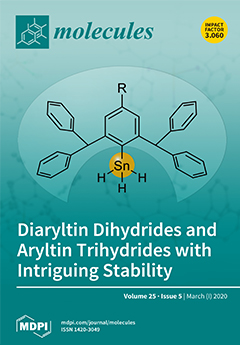Plant-based foods are characterized by significant amounts of bioactive molecules with desirable health benefits beyond basic nutrition. The Brassicaceae (Cruciferae) family consists of 350 genera; among them,
Brassica is the most important one, which includes some crops and species of great worldwide economic
[...] Read more.
Plant-based foods are characterized by significant amounts of bioactive molecules with desirable health benefits beyond basic nutrition. The Brassicaceae (Cruciferae) family consists of 350 genera; among them,
Brassica is the most important one, which includes some crops and species of great worldwide economic importance. In this work, the metabolite content of three different cultivars of
Brassica juncea, namely ISCI Top, “Broad-leaf,” and ISCI 99, was determined using comprehensive two-dimensional liquid chromatography coupled with a photodiode array and mass spectrometry detection. The analyses were carried out under reversed-phase conditions in both dimensions, using a combination of a 250-mm microbore cyano column and a 50-mm RP-Amide column in the first and second dimension (
2D), respectively. A multi (three-step) segmented-in-fraction gradient for the
2D separation was advantageously investigated here for the first time, leading to the identification of 37 metabolites. In terms of resolving power, orthogonality values ranged from 62% to 69%, whereas the corrected peak capacity values were the highest for
B. juncea ISCI Top (639), followed by
B. juncea “Broad-leaf” (502). Regarding quantification,
B. juncea cv. “Broad-leaf” presented the highest flavonoid content (1962.61 mg/kg) followed by
B. juncea cv. ISCI Top (1002.03 mg/kg) and
B. juncea cv. ISCI 99 (211.37 mg/kg).
Full article






